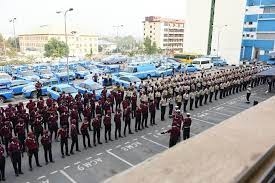Duties of a Phlebotomist: Read this article to see the duties of a Phlebotomist. Phlebotomists are responsible for taking blood samples for the purpose of medical testing, transfusions, research, or blood donations. Some of them discuss their line of work with patients and offer aid in the event that patients experience unfavourable reactions after having their blood drawn.
Read Also: Duties of A Construction Project Manager
Phlebotomists are medical professionals who operate in the laboratory of a healthcare facility to examine blood samples that have been collected from patients or donors.
They might be tasked with collecting blood from patients or donors so that these samples can be examined, analyzed, and tested in order to diagnose any infections and provide the all-clear for donation.
Read Also: Duties of a Psychiatrist
Duties of a phlebotomist
- Collects blood and nonblood specimens, such as urine, sputum, and throat swabs, for laboratory testing.
- Performs screening tests and provides results.JAMB Result
- Performs processes to prepare specimens for testing in the laboratory. Prepares specimens for shipping and inspection by a laboratory of reference. Contacts the ordering physician, pathologist, nursing station, or reference laboratory to clarify and/or resolve unusual test orders. Before collecting samples or processing specimens, unfulfilled orders are returned to the originator for clarification. Informs the supervisor of orders that are outstanding.
- Contributes to the institution’s general laboratory duties and requirements. Regularly attends departmental staff meetings and in-service training.
- Compliance with laboratory and hospital safety regulations and procedures is maintained.
- Maintains a clean work environment and replenishes daily supplies.
- Acquire blood samples from patients
- Especially when working on hospital floors, appropriately identify patients.
- Label vials with patient names and dates.
- Determine the appropriate method for collecting blood from each patient.
- Transport all specimen samples to the laboratory that is closest.InformationGuideNigeria
- Depending on the state in where you work, blood samples may be centrifuged.
- Expect to work with multiple patients of varying ages and medical problems.
- Employing courtesy, professionalism, and compassion when interacting with patients is essential.
- Always maintain an organized phlebotomy cart or station.
- When working with patients and equipment, always observe infection control procedures.
- Examining patients’ identity documents to determine their identities and personal information.
- Assessing the patient’s needs, evaluating the patient’s medical history, and determining the reason(s) for blood collection.Duties of a Phlebotomist
- Selecting the correct needle size and preparing veins or fingers for blood collection.
- Collecting blood from patients via venipuncture or fingersticks.
- Analyze blood samples when necessary using the appropriate testing equipment.
- Preparing specimens for transportation, including labeling containers correctly and matching blood samples to patients.
- Providing physicians, other healthcare professionals, and hospitals with diagnostic notes.
- Keeping and keeping records of patient identities, drawn blood volume, and diagnostic findings.
- Laboratory equipment for the collection and analysis of blood samples requires cleaning, maintenance, and calibration.
- As needed, order laboratory supplies.
- Prior to performing a procedure, always identify the correct in-patients of all ages by checking the name and medical record number on the requisition with the name and medical record number on the patient’s wristband.
- Always identify correct outpatients of all ages by requiring the patient (or guardian) to state his/her entire name and comparing it to the name on the requisition.
- Rarely fails to acquire a blood sample on the first attempt; consistently follows recognized laboratory procedures (i.e., proper patient identification, proper tube selection, etc.)
- Constantly validates and gathers the correct samples for specified testing
- Always initial, date, and record the moment blood, urine, or cultures are obtained on laboratory order forms.
- Always mark specimens appropriately with the patient’s name, medical record number, initials, date and time of collection.
- Correctly enters all patient and specimen collection data in the appropriate Phlebotomy Log (i.e., for IP, ER, OP, Olive.)
- Maintains awareness of the relevance of timed specimen collection and seeks to gather these specimens at the proper time (i.e., Glucose, Isoenzymes, Drugs, Blood Cultures, Hemograms, etc.)
- Provides outpatients of all ages with the correct instructions for collecting urine specimens (e.g., for C&S, GTTs, etc.).
- Processes accurately all laboratory orders, paperwork, and specimens for routine and reference tests
- Performs duties consistently in a tidy, accurate, and timely manner.
- Performs each procedure with professionalism
- When necessary, seeks the Chief Medical Technologist’s assistance in resolving technical or personnel issues.
- When required, demonstrates the ability to exercise independent thought and action in response to unforeseen circumstances.
- Particular emphasis on blood samples, blood cultures, referral tests, and specimen requirements.
- As requested, assists with the orientation of new staff members.
- Knows what tubes are required for various tests, how each must be handled, and how to determine if something is unknown.
- Dependable in carrying out instructions and performing job duties
- Attends work as scheduled
- Always seems nice and adheres to the dress code as specified.
- Always wears a lab coat (or an authorized apron/gown) and a name badge.
- The quality of speech and dialogue is consistent with hospital code (confidentiality)
- Demonstrates both laboratory and interdepartmental loyalty and teamwork.
- Collect blood from both the patients and the donors.
- Have a conversation with the patients and the donors to make them more comfortable about having their blood extracted.
- Identifying a patient or donor is necessary in order to verify that the blood is properly labeled.
- Mark the blood that has been drawn for testing or processing.
- Fill up the necessary fields in a patient database.
- Putting together and maintaining various types of medical equipment, such as needles, test tubes, and blood vials
- Organize daily tasks according to the level of priority given to requests for fluid samples.
- Patients and their personal information should be identified using the patients’ identification, other documents, or other ways.
- Determine the most appropriate procedure for venipuncture based on the patient’s age, health, and other factors.
- Patients should be reassured, and you should help them relax.
- Locate veins that are appropriate for being punctured.
- Blood should be drawn using needles, vials, and any other equipment that has been sterilized.
- Make sure that the samples are of the highest possible quality and quantity.
- Make sure that the samples are accurately labeled, and then send them out to be tested.
- Provide answers to the inquiries of the patient and pertinent information.
- Maintain precise records of the tests and fluid specimens you take.JAMB Portal
- Maintain compliance with all applicable health and safety requirements while you are at work Provide assistance with blood transfusions whenever they are required
- Maintain a clean and sanitary working environment.
Read Also: Duties of A Licensed Practical Nurse (LPN)
Phlebotomists, also known as Phlebotomy Technicians, work directly with patients by obtaining blood specimens through venipuncture and/or finger sticks, and prepare specimens for transport and laboratory testing. You can use this article as a guide if you decide to work as a phlebotomist.
Check JAMB Result
Check and Confirm: How much is Dollar to Naira





